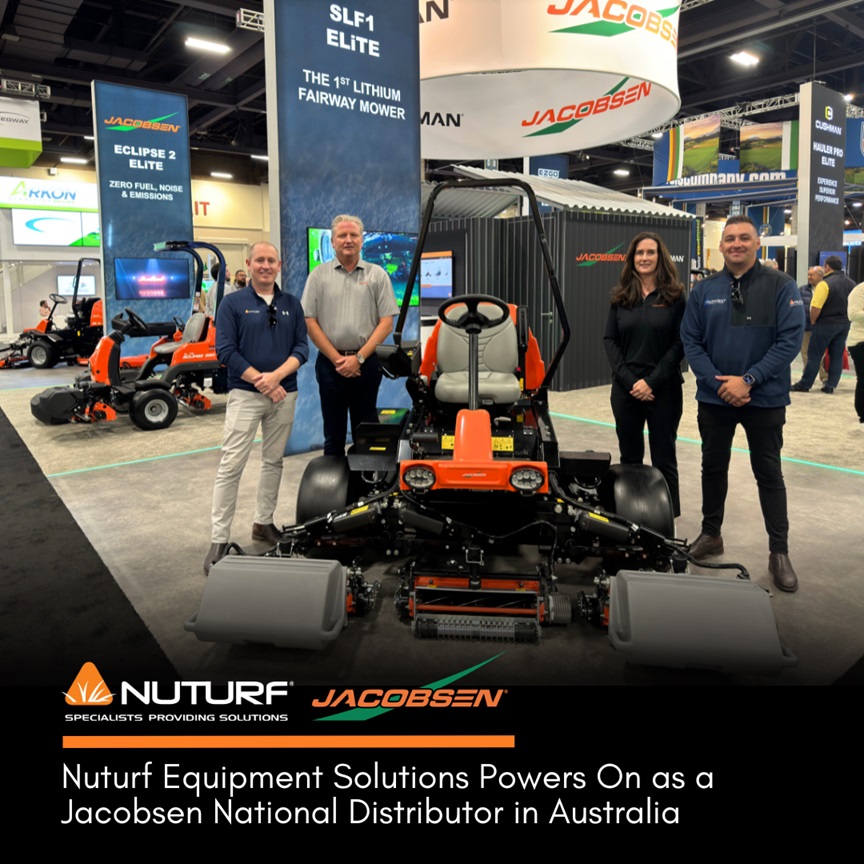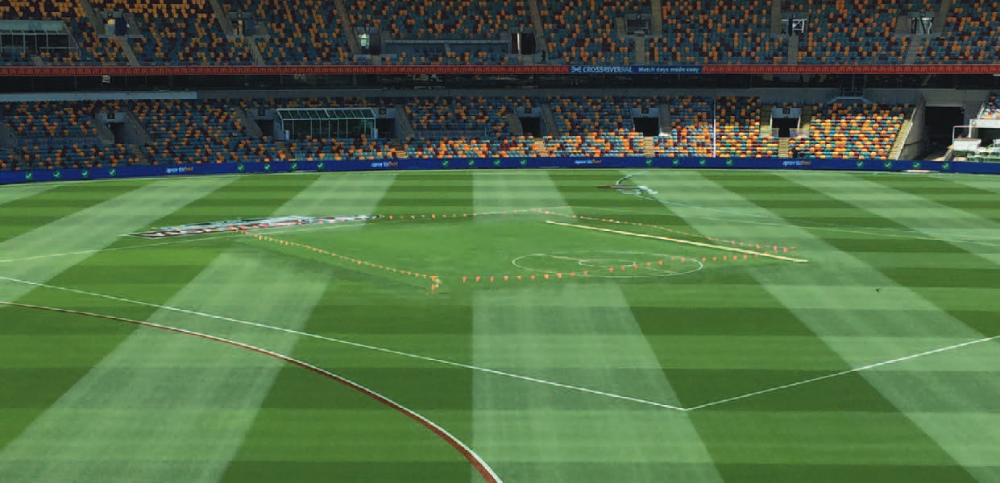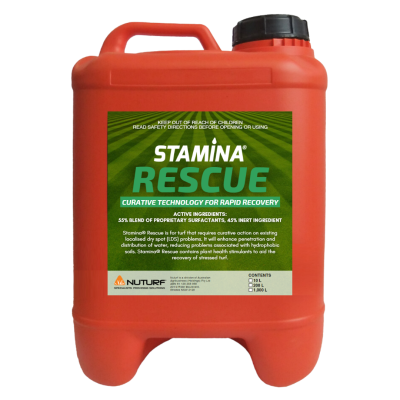What Causes Localised Dry Spot in Greens and Tips for Managing It
On sand-based profiles (e.g. USGA spec greens), summer can bring with it the return of Localised Dry Spot (LDS). This patchwork of inconsistent drying and wetting behavior can cause significant damage to a stable quality surface.
What causes localised dry spot?
A question commonly asked by turf managers is why we observe localised dry spot in turf when there is a fairly uniform and consistent root zone construction? Why is the area not universally dry or uniformly okay? While there isn't a single answer, we know that in some cases, dry patch can be caused or contributed to by factors other than soil differences. One example is the impact of microbiology such as fungi.
For example, disease activity from various pathogens is often found to be patchy and unpredictable. This means that when fungi is a contributor to localised dry spot, localised issues and patches can occur. Some byproducts of fungal decomposition are highly hydrophobic acids that create areas of soil that can be very challenging to re-wet. The decomposition of organic materials creates organic acids which coat soil particles. Dense networks of mycelia (vegetative fungal structures) can also create hydrophobic areas.
When sand grains from dry patches are closely inspected, they often reveal lipids and waxy deposits which broadly coat soil particles, which indicates them to be underlying causes. Whilst it has been speculated that fungi such as fairy ring play a role in the production of these waxy substances, there research surrounding this topic is incomplete.

Dry Patch or Drought Stress?
When deciding on your approach to managing the issue, it is important to understanding the distinction between drought stress and dry patch. Drought stress can be addressed fairly simply by correcting watering practices or checking equipment, whereas alleviating genuine dry patch in a hydrophobic zone caused by soil-borne soil processes can be more complex.
- In instances of drought stress, wetting agents play an important role in correction. In cases where limited water is available, wetting agents are important to ensure that every drop requires optimisation for plant availability. Corrective measures for drought stress well likely have a theme of consistency in product time and application frequency.
- When dealing with genuine hydrophobicity, the wetting agents you use over the course of the treatment may vary as the issue is progressively addressed. For example, you may start off with a wetting agent with a focus on simply rewetting, move onto one that provides improved retention, then, one that provides balanced retention, and potentially even dispersion if the situation requires.
What are non-ionic surfactants?
Water likes to attract water. It does this through cohesive forces. In the absence of something to counter these cohesive forces even under good soil conditions water can clump together, move away together, and at times be difficult to retain where we really want it. Add repellent soils into the equation and moisture retention in root zones can be quite challenging. Surfactants act on the cohesive forces, encouraging water molecules to behave more independently, and in doing so are able to encourage water to ‘spread’ over a greater surface area.
Most surfactants we deal with in turf are drawn from the non-ionic group. This umbrella group have two further distinct sub groups – soil moisture retainers and soil penetrants. As the names suggest one tends to retain water within the profile and the other move water through a profile. Whilst the two categories may be manufactured and used independently, it is equally quite normal for blends to be produced that try to gain a middle ground between the two.
Looking at product information provided by the manufacturers can help you identify the behaviours a product will display. You will often see descriptors such as EO/PO block copolymers. The Ethylene Oxide (EO) terminal functional ends attract or disperse water more, while the Propylene Oxide (PO) terminal functional ends repel water more. The relative balance of these in a product may be represented by HLB values – the hydrophobic / liphophilic balance and the more balanced combinations tend to be those ‘middle ground’ type products.
How to use wetting agents correctly
Common elements of good use exist between the range of wetting agent possibilites we encounter – principles such as applying the right rate, via an effective method, and following manufacturer recommendations on regularity of re-application. Adhering to the label rate is just good practice, but there is also a safety element. Whilst uncommon (especially in the non-ionic surfactants) there can be membrane permeability issues and phytoxicity under certain conditions so reducing this risk is important. More is not better for these type of products. Lifting rates will not provide greater longevity or effectiveness so save your money and limit applications to those directed by the label.
If we accept soil wetting agents are only effective once in the soil environment then the nozzles used, the carrier volume, and post-application activities will either enhance or limit the product's ability to do its job. Ideally, these types of products should be applied using 08 or flood jet types of nozzles (big heavy droplets) and the carrier volume should be high to get the initial placement at the soil surface. Post application there should be an additional watering in to get the surfactant in the soil around the root zone where it needs to function. Success comes from the combination of all three parts of the application process. The addition of wetting agents during the surface renovation to make use of access to the rootzone created by core holes is an opportunity that shouldn’t be missed if available.
Most wetting agents will recommend a 2-4 week recurrent application cycle. Adhering to this regime is important as they are not generally long-lived and break down in reasonably short periods of time. Regular applications minimise the fluctuation between peak performance and no performance – trying to get continuity of function so turf health remains stable as well.
How Nuturf can help you with dry patch or drought stress
Nuturf carries a generous range of soil wetting agents so there is sure to be one, or a few, that will be suitable for you. A diverse spectrum of products can be found within the Stamina wetting agent family that tries to cater for the full spectrum of possible needs. If you have hydrophobic soils needing an initial ‘wetting’ to re-establish a more normal soil moisture environment we have a product for you.If you manage sand-based greens or your site is dominated by a sandy profile and you are particularly challenged to get any moisture retention whatsoever, we can assist. If areas of your course tend to hold a little too much moisture and you need to move this through the profile to maintain adequate soil oxygen and minimize Pythium risk – we have a solution for you too.
We have straight surfactants, blends, and high-load concentrates. We have granular options for those that lack the equipment to apply liquids and importantly we offer products manufactured and developed in Australia for Australian conditions.














